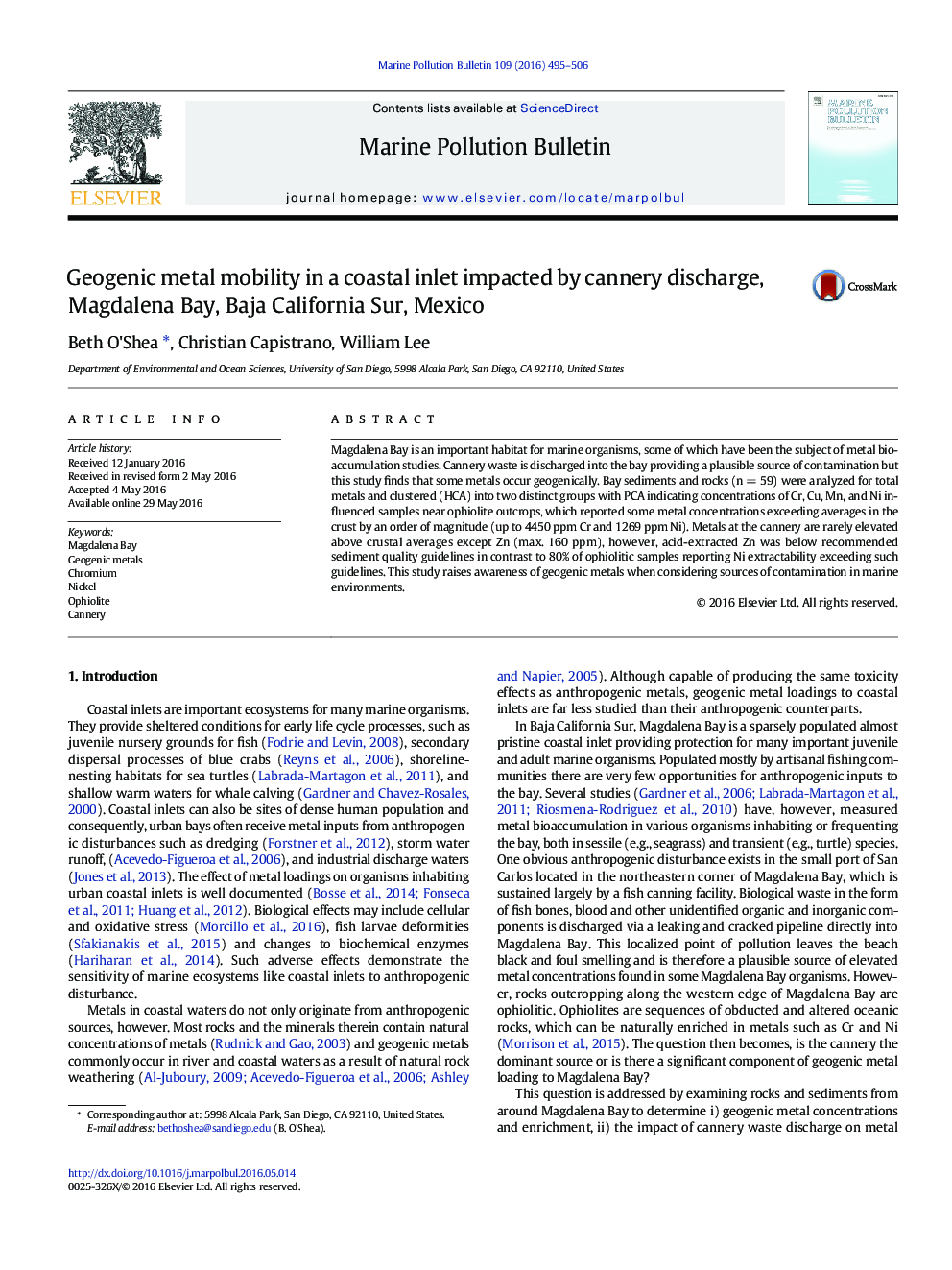| Article ID | Journal | Published Year | Pages | File Type |
|---|---|---|---|---|
| 4476428 | Marine Pollution Bulletin | 2016 | 12 Pages |
•Elevated Cr, Cu, Ni occur naturally in sands and rocks of Magdalena Bay.•Some metals are mobile at concentrations exceeding toxicity guidelines.•Fish cannery waste may not be a significant source of metals to Magdalena Bay.•These geogenic metals may contribute to observed metal bioaccumulation in the bay.
Magdalena Bay is an important habitat for marine organisms, some of which have been the subject of metal bioaccumulation studies. Cannery waste is discharged into the bay providing a plausible source of contamination but this study finds that some metals occur geogenically. Bay sediments and rocks (n = 59) were analyzed for total metals and clustered (HCA) into two distinct groups with PCA indicating concentrations of Cr, Cu, Mn, and Ni influenced samples near ophiolite outcrops, which reported some metal concentrations exceeding averages in the crust by an order of magnitude (up to 4450 ppm Cr and 1269 ppm Ni). Metals at the cannery are rarely elevated above crustal averages except Zn (max. 160 ppm), however, acid-extracted Zn was below recommended sediment quality guidelines in contrast to 80% of ophiolitic samples reporting Ni extractability exceeding such guidelines. This study raises awareness of geogenic metals when considering sources of contamination in marine environments.
